





Growing up in a beach town, I saw my fair share of sunburns. (We were a bit more lax about sunscreen in those days). Luckily my stepmother always had an aloe vera on hand to soothe my sun-kissed shoulders. Ever since then, I’ve thought of aloe as a handy succulent that no home should be without. Fortunately, it’s extremely easy to propagate.
There are more than 250 species of aloe in the world, but it is aloe vera (also known as Aloe barbadensis) or “true aloe” that is most commonly associated with health benefits. Though the debate still rages around the more extreme claims of aloe’s miraculous powers, most people agree that it does help with minor skin injuries.
See below for step-by-step instructions for propagating aloe from a mature plant:
Photography by Justine Hand.
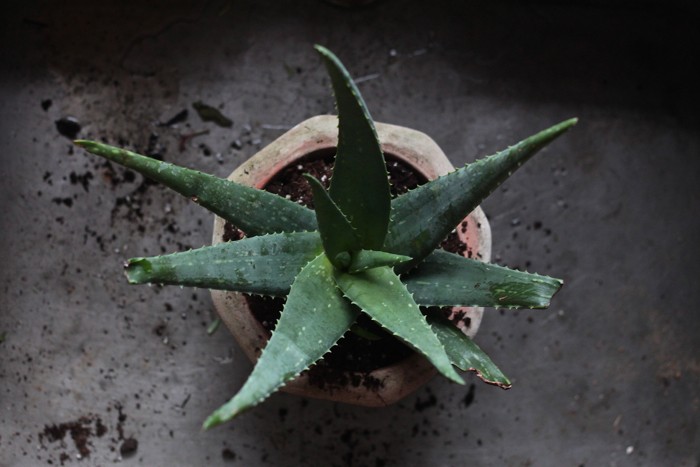 aloe vera plant
aloe vera plant
Above: Ever the stalwart soldier in the battle against minor scrapes and burns, my aloe vera bears the scars of life with little kids, but it still has lots of life to give.
The tradition of using aloe vera for medicinal purposes goes way back. Thousands of years before my resourceful stepmother, the ancient Egyptians placed it in the pharaohs’ tombs to aid them in the afterlife. Even if you don’t believe that aloe is the “Plant of Immortality” as the ancients did, you might agree that it makes an auspicious present. At the very least it adds character to a home and helps clear the air.
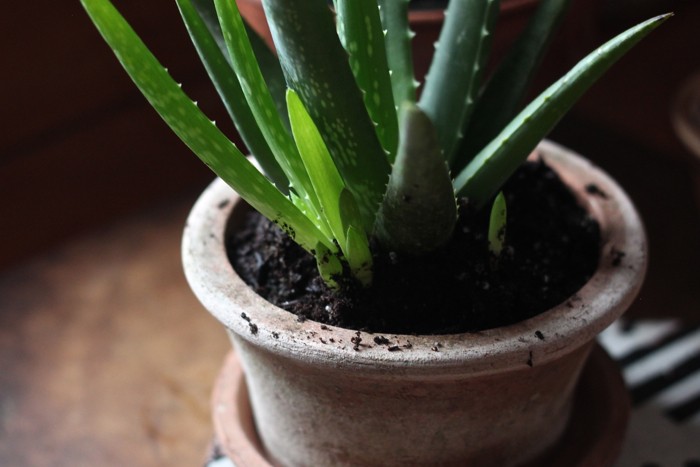 aloe offshoots
aloe offshoots
Step 1: Identify the offsets. Since aloes spread by producing easily transplanted offsets, they are quite easy to propagate. Here you can see two offsets in light green; the larger one to the left is ready for its own pot. The tiny one just beginning to emerge on the right will have to wait a bit.
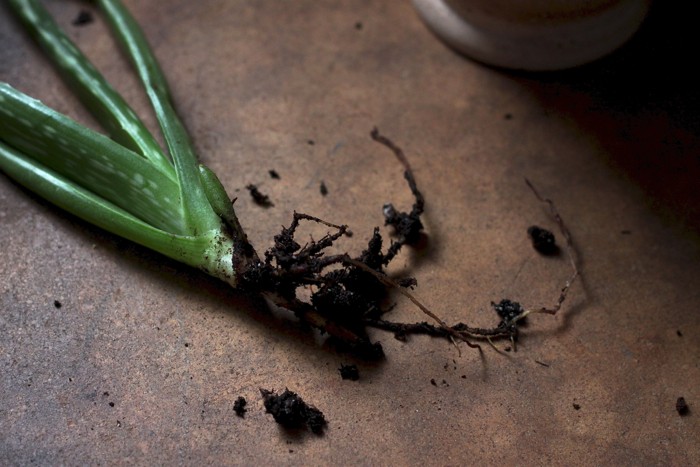 aloe offshoot removed
aloe offshoot removed
Step 2: To successfully transplant an offset, one must wait until it is big enough to have its own roots. I hold off until it has four or more leaves several inches long.
Step 3: To separate the offset from the mother plant, take them both out of the pot and gently pry the offset and its roots away from the larger aloe.
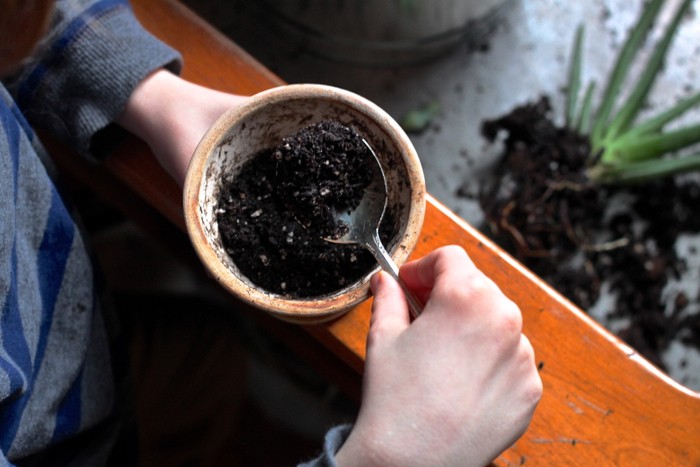 repotting an aloe, add dirt
repotting an aloe, add dirt
Above: My son, Oliver, prepares a new home for the aloe offset.
Step 4: Repot your offset. A semi-tropical succulent, aloe prefers soil with good drainage. We placed a bit of gravel on the bottom of our pot, to aid drainage and prevent the aloe roots from sitting in water. On this we layered good potting soil with extra perlite. (You also can use sand.)
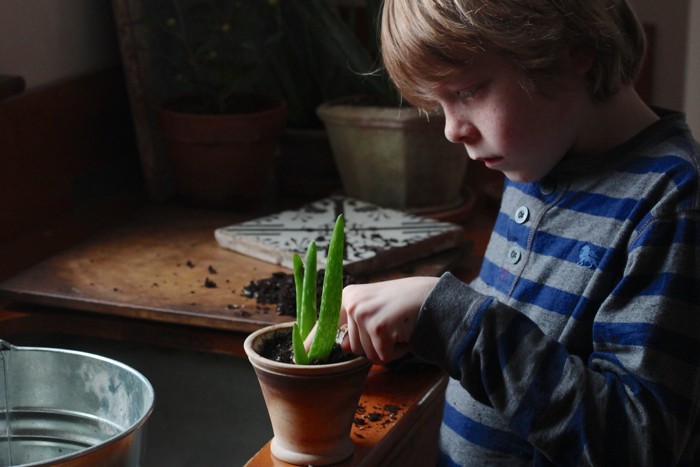 Olie plants an aloe
Olie plants an aloe
Above: Oliver gently packs soil around his transplanted offset.
Step 5: After potting your aloe, give it a good soak. In the winter, your plant will become somewhat dormant and require less water. In the summer, water thoroughly, but always allow your aloe to dry out completely between waterings. Cacti fertilizers can also be used once a year in summer.
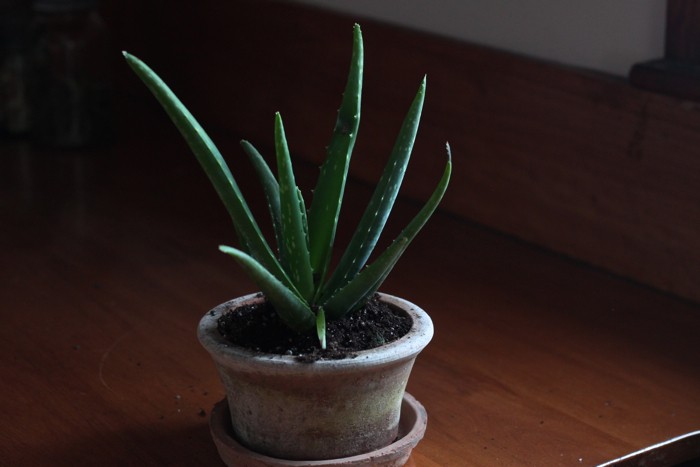 ALoe vera
ALoe vera
Above: With shallow roots that tend to spread, aloe prefers a wider pot with a drainage hole.
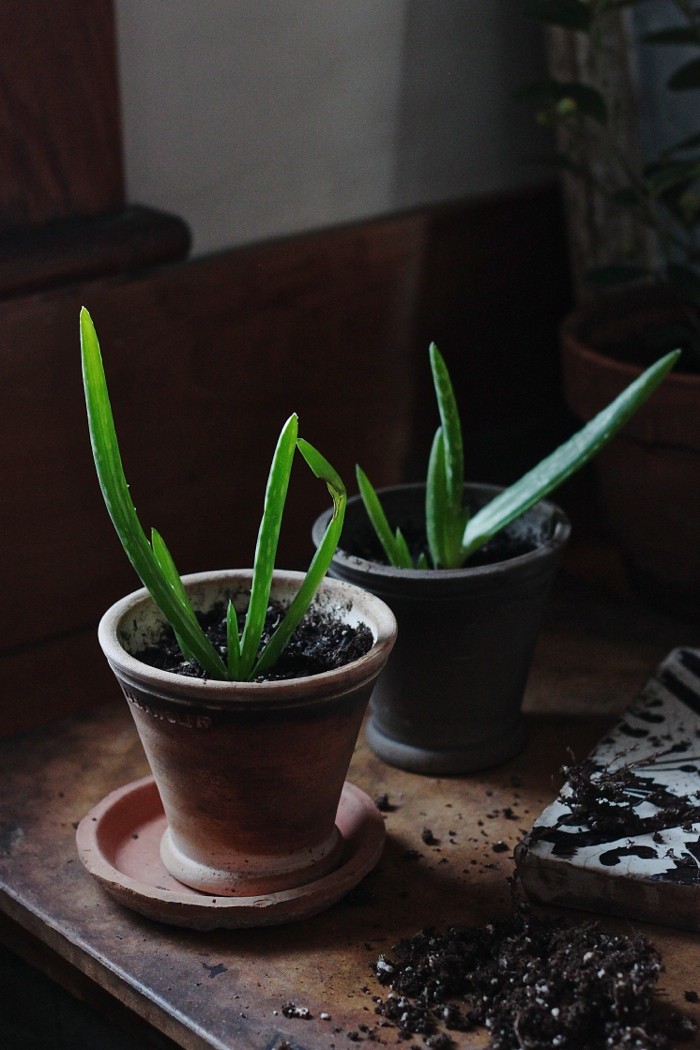 aloe vera offsets repotted
aloe vera offsets repotted
Above: A gift fit for a king, or anyone really, our baby aloes await a new home.
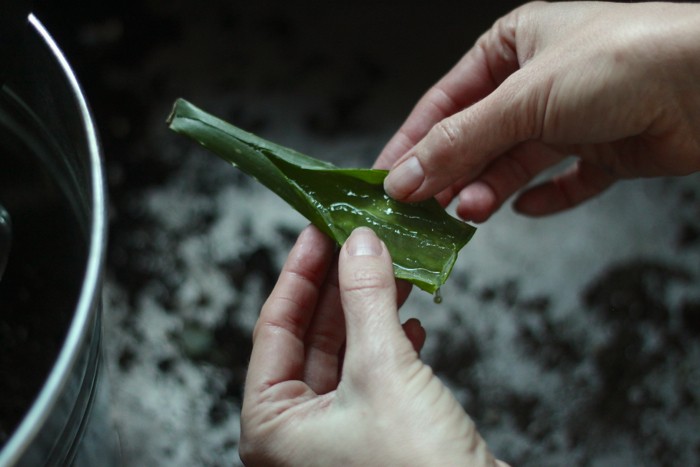 extracting aloe gel
extracting aloe gel
Above: To extract the gel of an aloe vera, simply split the outer skin of a mature leaf with a knife and rub directly onto skin.
 recirculation-email
recirculation-email
N.B. Erin discovered that aloe not only is great on scrapes and burns, it also helps to take the sting out of bug bites.
Copyright © www.100flowers.win Botanic Garden All Rights Reserved